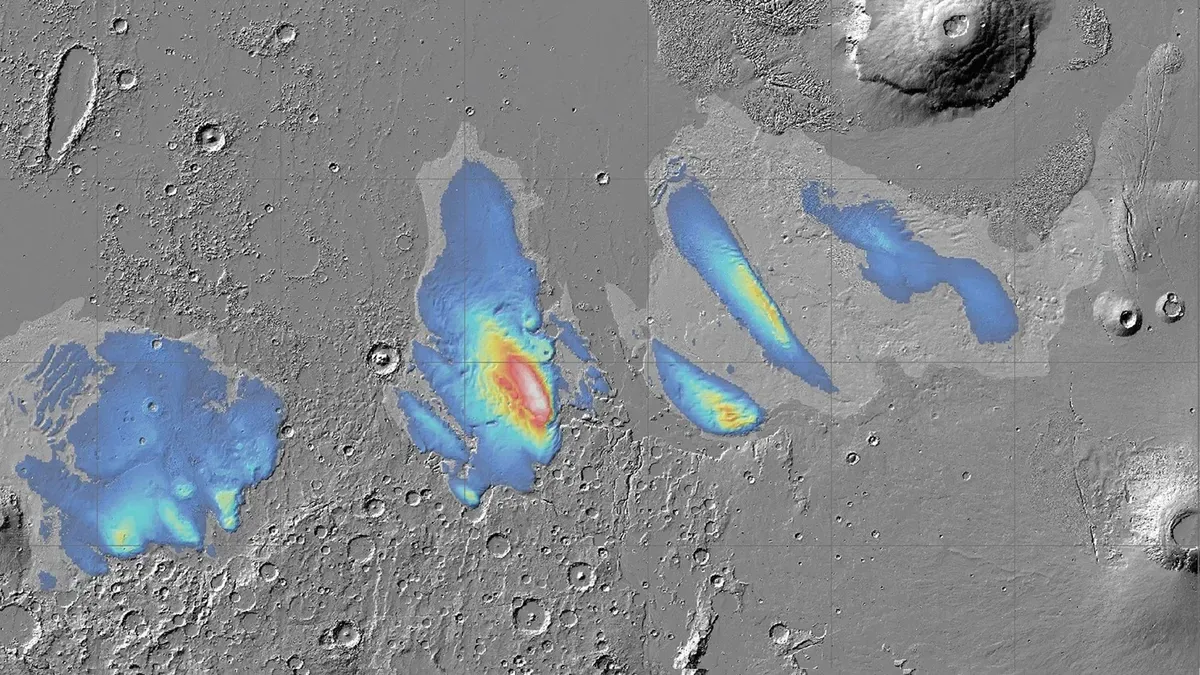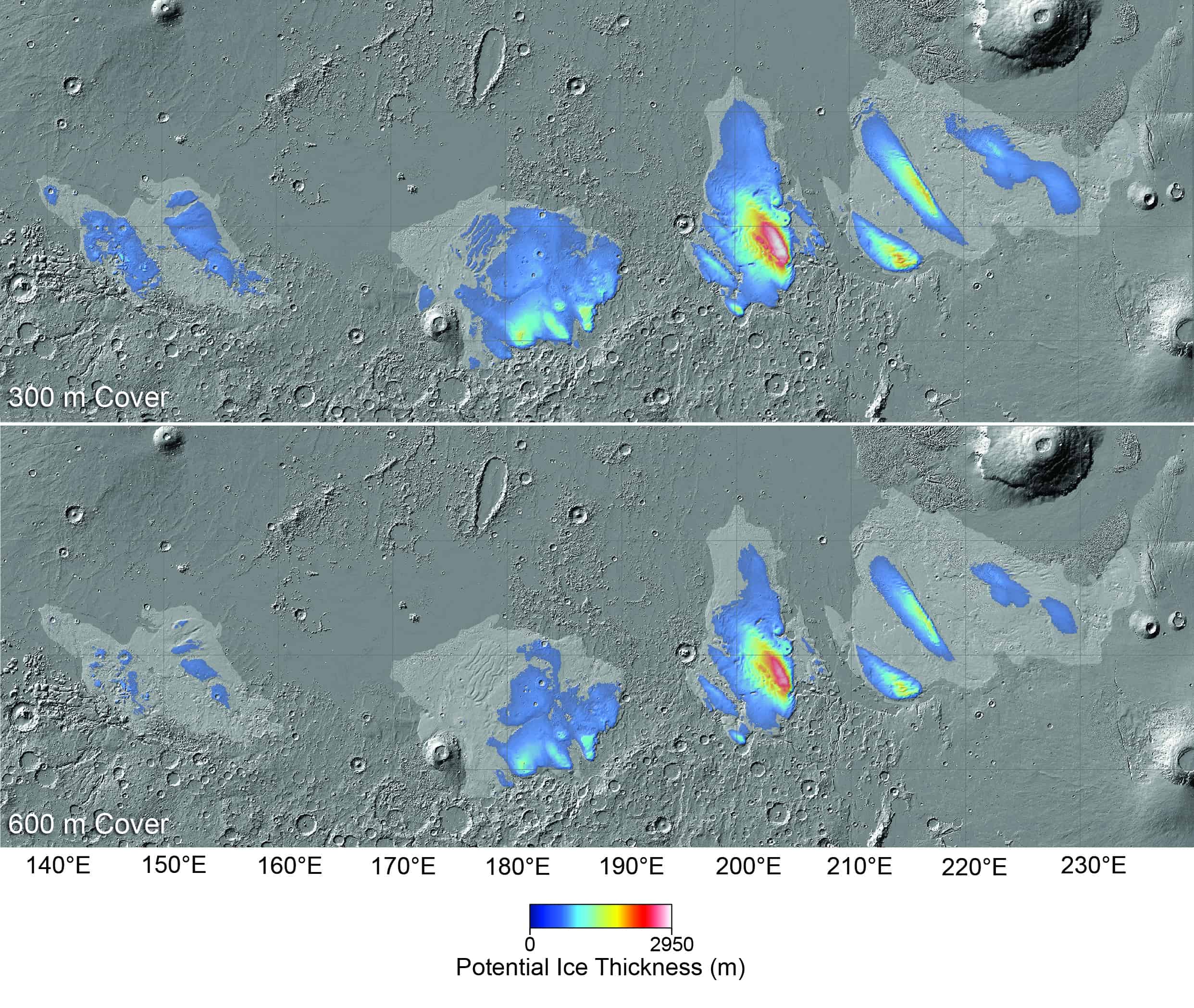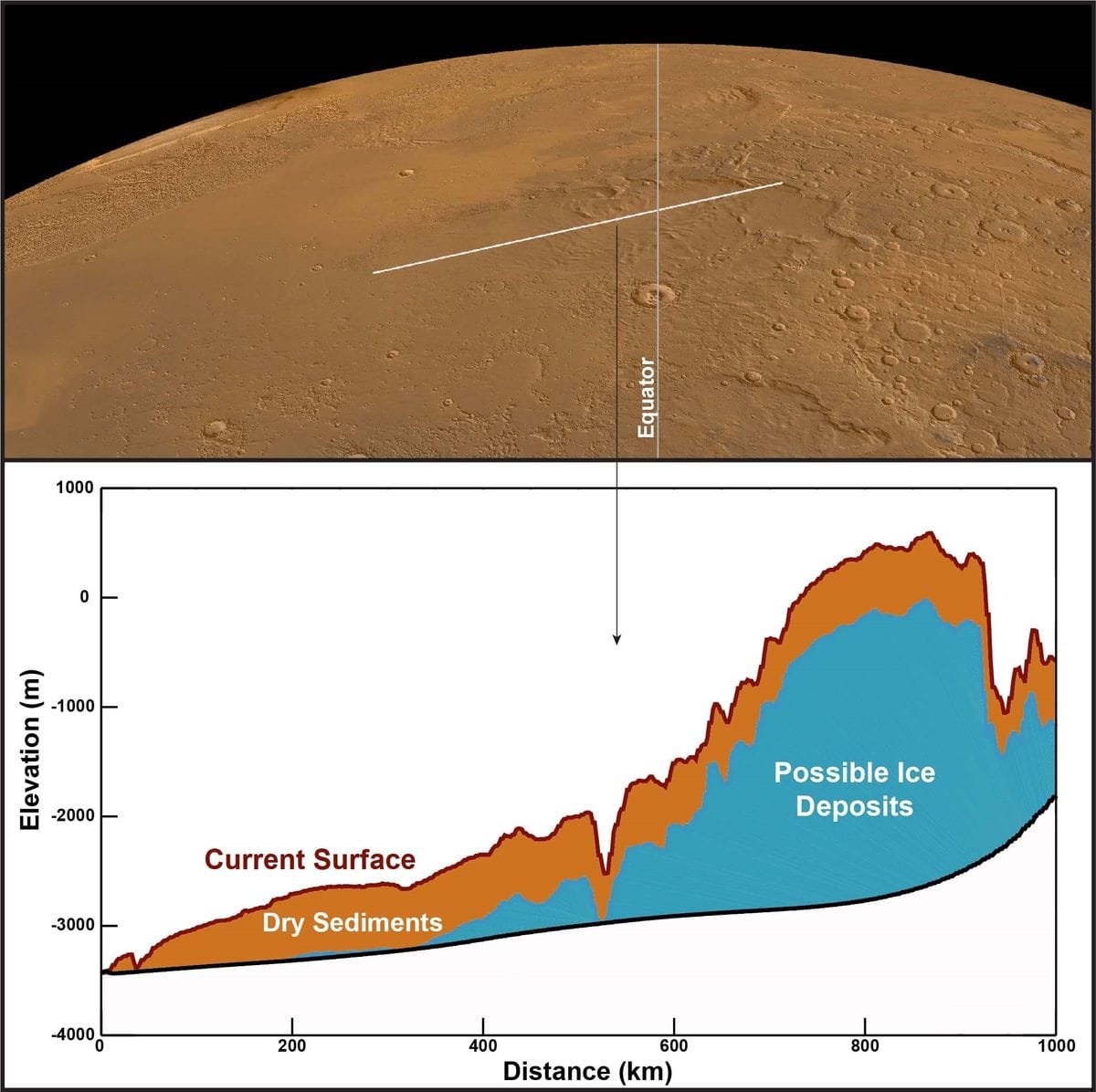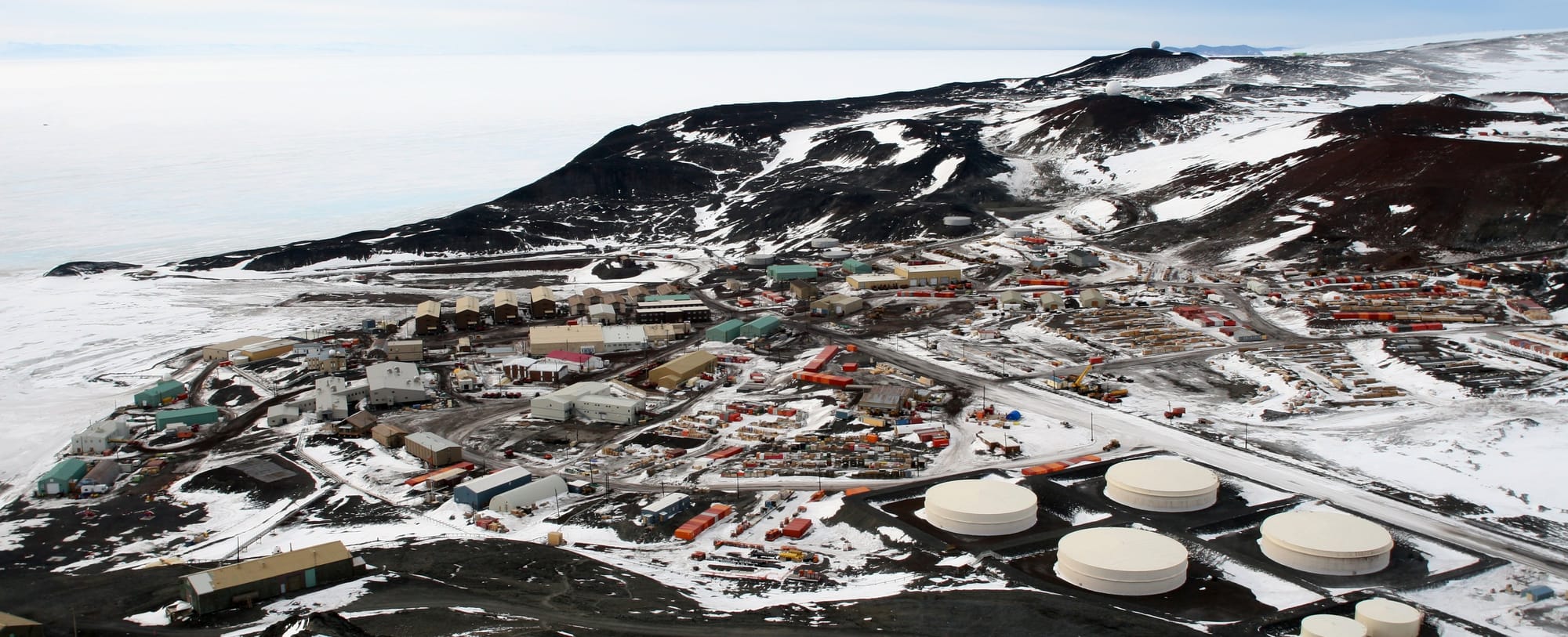Water Ice at Mars' Equator
What it means for future human settlements.

The Discovery
A few days ago, scientists working with the European Space Agency's Mars Express spacecraft announced a finding of possible water ice buried under a few hundred meters of packed dust in Mars' Medusae Fossae region. Mars Express has been orbiting Mars for 20 years, and has passed over Medusae Fossae at least once before, studying it with an unspecified instrument. Then more recently, the spacecraft passed over the same region again and pointed the MARSIS radar at it.
This happens all the time. Space missions, especially those to other planets, carry multiple sensors. A "run" with one sensor can yield vastly different data from another run with a different sensor. As for why both sensors weren't used at the same time, that data has to be saved on the spacecraft's computer (which is itself long obsolete) and then beamed back to Earth. Add in the fact that there are so many places on Mars that scientists want to study, and it's not surprising that they made this discovery when they did.

So what does the above figure tell us? This is a map of Medusae Fossae, superimposed with radar returns consistent with layers of water ice and dust that we've seen before at Mars' polar caps. Medusae Fossae is a vast swath of wind-sculpted features right on the equator, stretching from 140oE to 230oE. That's a quarter of Mars' total circumference!
Mars Express has a highly inclined orbit that allows it to pass over the same region multiple times so it can take "slices" of radar data from underground. Water ice is highly reflective to radar, dust less so. Our technology, even 20 years old, is sensitive enough to tell the difference between a reflected radio pulse from one depth vs another, based on time-of-flight. A radar instrument can use the differences in reflectivity and times-of-flight to "peel" the dust/ice layers apart like an onion. The figure below is the result.

This is the second time a large deposit of water has been suspected at Mars' equator. The other one is in Candor Chasma, the very center of the Valles Marineris rift valley system. This one wasn't detected with radar but with ExoMars' FREND instrument, which uses neutron spectrometry that detects the differing velocities of neutrons generated when cosmic rays hit different materials. The distribution of neutron velocities reveals the hydrogen content, which in turn is geologically indicative of water or hydrated minerals. The area marked 'C' in the below figure is where up to 40% of the near-surface material appears to be composed of water by weight.

Both deposits would easily dwarf the estimated amount of water ice in the permanently shadowed craters in Luna's polar regions. I want to expound a bit on what these discoveries mean for future human settlements.
How We Use Water
To understand what the amount of water on Mars mean for human settlements, we need to take a look at our consumption in real-world conditions first. I am assuming that the goal is self-sufficiency. The definition is that the settlement produces everything it needs. This includes tangible products like food, metals, electronics, plastics, finished products, lubricants, as well as non-tangible products like repair work, ideas, software, childcare, or therapy. This implies division of labor and specialities and sub-specialities. Which in turn implies a large population to fill all these specialties.
An off-Earth settlement would look more like McMurdo Station in Antarctica, and less like the International Space Station. McMurdo, with an average population of 850, can maintain itself and support field operations more easily than the ISS, which has a crew of 6 and must rely on hundreds of people on the ground, including experts in Mission Control and contractors in aerospace companies. McMurdo's larger population allows for greater division of labor than astronauts on the ISS, who must be responsible for maintenance as well as scientific research. McMurdo still relies on imports, but it gives us an useful analogy for how to think about this issue.

McMurdo uses 50,000 gallons of water a day in the summer. This works out to roughly 60 gallons per person per day. This water is used to clean dishes, prepare food, flush toilets, brush teeth, wash hands, wash laboratory equipment, drinking, etc. This water is taken from the ocean, desalinated by reverse-osmosis, and piped to the facility (source here). The McMurdo crew already rations their water use to one shower every 2 days, so I do not think the 60 gal/person/day figure can be reduced much without causing discomfort and hygiene issues. Why leave Earth just to be miserable on another world?
A knowledgeable reader might point out that the ISS crew uses only 1 gal/person/day. The ISS is an example of extreme water rationing, and that owes largely to the fact that running water isn't very useful in freefall. For example, they have to clean themselves with wet wipes instead of showers (which in turn have to be manufactured!). Not a very sustainable solution. I don't consider the ISS to be a good analogy for a planetary base with gravity.
Note that McMurdo is a research facility, not an agricultural or industrial station. It has to import all its food, fuel, medicine, and spare parts. If it had to make everything it needed, its water use would be a lot higher than 60 gal/person/day. A thorough analysis is out of scope for this post, but it's safe to assume that 60 is the bare minimum.
An off-Earth base will need closed-loop water recycling. The Water Recovery System (WRS) on the ISS, including the Brine Processing Assembly (BPA) recovers 98% of the water used by the crew, including that in sweat and urine. This doesn't include water from feces, but that is already a very good recovery rate. No process is ever 100% efficient, so 98% is probably the best we can realistically plan for. If that were scaled up to McMurdo's water needs, how long would McMurdo last without water from the ocean?
The WRS takes eight days for one cycle. Assuming the base loses 2% per cycle, an initial amount of \(i\) gallons, and a final amount of \(f\) gallons, the "runway" can be approximated by an exponential decay function:
\(f = ie^{-0.02n} \)
where \(n\) is the number of cycles. Again, 50,000 gallons a day is the bare minimum for McMurdo, so we'll use it as the final value. Assuming 100,000 as the initial value, we arrive at about 35 cycles. That's 280 days before the McMurdo crew starts to get uncomfortable.
That's not a long time. Extending that runway takes even more water or reduced losses, if there's no external source. Hopefully I've made my point: to sustain any meaningful human presence on another world requires a lot of water regardless of what conservation and recovery techniques are used. With that, let's look at how this discovery changes our concept of humans on Mars.
Humans on Mars
Water on Mars was never in question. We've known that Mars has water since 1777, when Sir William Herschel started observing the polar caps in detail. But the polar caps are well out of the way of any spacecraft arriving on a likely interplanetary trajectory near the ecliptic plane. To land at the poles, the spacecraft would have to first perform an inclination change maneuver, expending delta-V (and thus propellant). On the other hand, the equator always intersects the ground track of any orbit around a planet. So a spacecraft in Mars orbit can always land on the equator, but not always at the poles.
For decades, mission planners struggled to identify a good location for the first human expeditions on Mars. The higher latitudes required more additional propellant to land at and launch from, taking in account the delta-V penalty that occurs when you can't take advantage of the planet's increased rotational speed at the equator. The lower latitudes had too little water in a form that could be easily harvested and purified.
This is why water ice on the equator is such a big deal. Even if it's buried under hundreds of meters of dust. Future expeditions and settlements won't have to be located in the polar regions to access high-quality water resources. They can have easy access to interplanetary trajectories and water. Furthermore, the asteroid-like moons Phobos and Deimos are in nearly equatorial orbits and can be accessed relatively easily from locations on the equator.
I hope this discovery sparks more interest in mission planning. In the near term, more robotic missions will be needed to visually confirm the water and characterize its concentration and abundance in the regolith.
